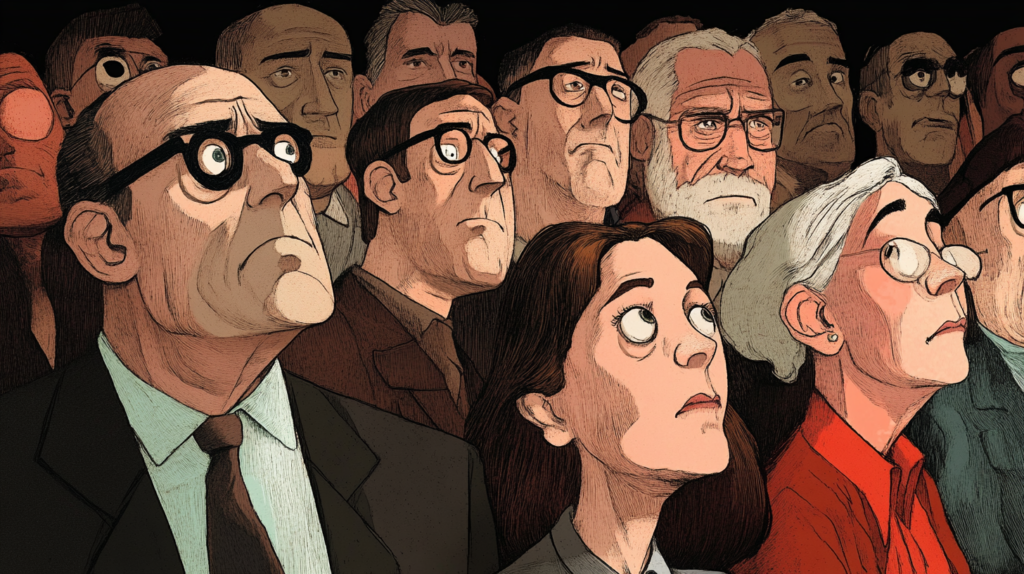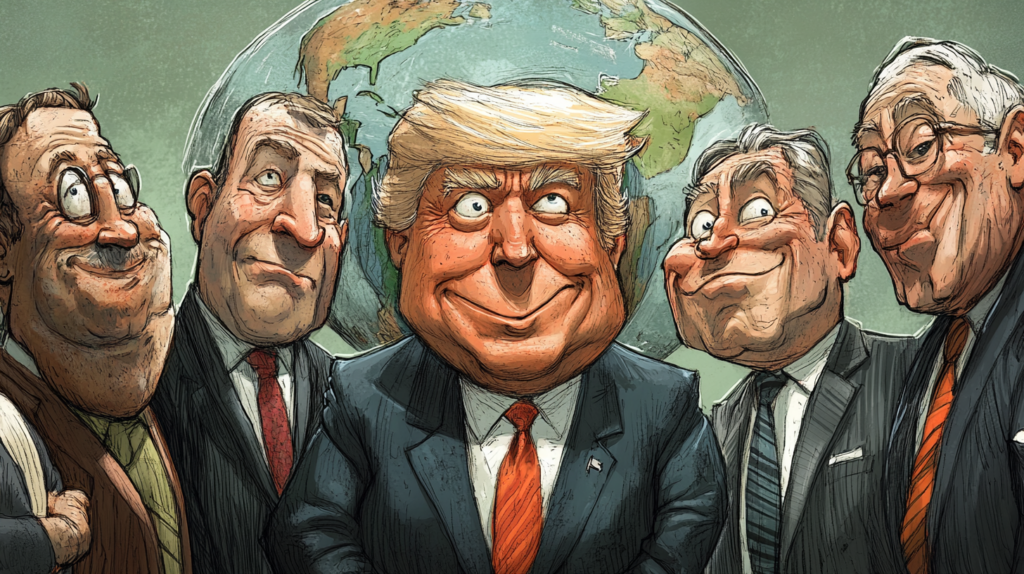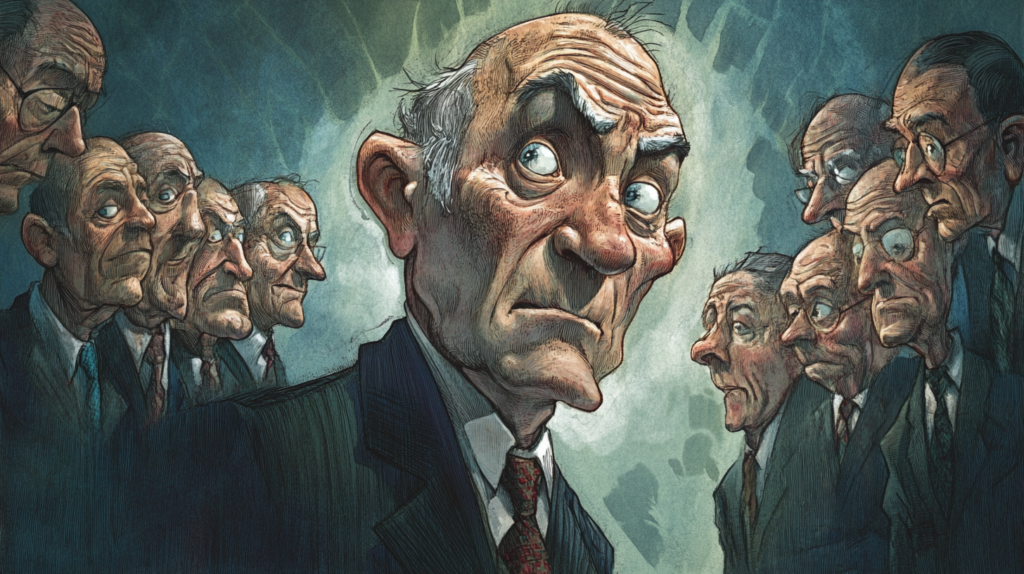Editorial cartoons hold a unique position in the history of journalism and visual storytelling. As a historical mainspring, these pointed, often humorous illustrations have influenced public opinion, shaped political discourse, and provided a record of societal values and conflicts. They are not merely snapshots of a moment in time; they are dynamic artifacts that reflect the cultural, political, and economic forces of their eras. Over the centuries, editorial cartoons have evolved from simple woodcuts and etchings into a sophisticated form of commentary, adapting to new technologies and audiences while continuing to serve as powerful tools for critique and satire.
In this article, we explore how editorial cartoons have functioned as a driving force in shaping historical narratives and public discourse, examining their origins, their role in various periods of history, and their continued relevance in today’s rapidly changing media landscape.

The Early Beginnings of Editorial Cartoons
The origins of editorial cartoons can be traced back to the early days of print media in Europe. In the 16th and 17th centuries, satirical woodcuts and engravings appeared in pamphlets, broadsides, and newspapers. These early visual commentaries often targeted religious authorities, monarchs, and political factions. For example, during the Protestant Reformation, satirical engravings circulated widely, ridiculing the Catholic Church and advocating for reform. These images, although primitive by today’s standards, laid the groundwork for the modern editorial cartoon by demonstrating the power of visual satire to challenge authority and spark public debate.
As printing technology improved, so too did the complexity and distribution of editorial cartoons. By the 18th century, artists like William Hogarth in England used sequential engravings to critique social norms and political corruption. Hogarth’s works, while not always single-panel cartoons, introduced the idea that visual art could serve as a form of moral and political commentary. His influence paved the way for the editorial cartoons of the 19th century, when newspapers became the primary vehicle for this form of expression.
The 19th Century: The Golden Age of Editorial Cartooning
The 19th century marked a turning point for editorial cartoons, as they emerged as a significant force in journalism. Advances in lithography and printing made it easier to reproduce detailed illustrations, and the growth of the newspaper industry provided a wide audience. During this period, editorial cartoons became a staple of the press, shaping public opinion and playing a critical role in political movements.
One of the most famous editorial cartoonists of this era was Thomas Nast, whose work for Harper’s Weekly helped define the genre. Nast’s powerful caricatures of political figures like Boss Tweed and his Tammany Hall cronies not only entertained readers but also exposed corruption and mobilized public outrage. His illustrations were instrumental in bringing down Tweed’s political machine, demonstrating the real-world impact editorial cartoons could have on governance and accountability.
Nast’s legacy extended beyond political corruption. He popularized enduring symbols like the Republican elephant and the Democratic donkey, creating a visual shorthand that continues to be used in political commentary today. His work solidified the notion that editorial cartoons could not only reflect public sentiment but also shape it, making them a historical mainspring of political engagement.

Editorial Cartoons as Historical Documents
Editorial cartoons serve as more than just vehicles of satire; they are historical documents that offer insight into the attitudes, biases, and conflicts of their time. By examining the cartoons of a particular era, historians can gain a deeper understanding of societal values, cultural tensions, and political controversies. For example, the cartoons published during the American Civil War reveal how the Union and Confederate causes were portrayed in the media, highlighting the propaganda techniques used to sway public opinion.
Similarly, the editorial cartoons of the late 19th and early 20th centuries provide a window into the struggles of the Progressive Era. Artists like Joseph Keppler and Puck magazine’s cartoonists tackled issues such as labor rights, immigration, and monopolies. Their work not only reflected the public’s concerns but also influenced the direction of political reforms, helping to galvanize support for anti-trust legislation and labor protections.
In this way, editorial cartoons have functioned as a mainspring of historical understanding, offering a visual record that complements written accounts. They capture the mood of a nation, the conflicts that defined an era, and the individuals who shaped history, all in a single image that can be more immediate and impactful than a lengthy article.
The Evolution of Editorial Cartooning in the 20th Century
As the 20th century dawned, editorial cartooning continued to evolve in response to technological advancements and changing political landscapes. The rise of mass-circulation newspapers and magazines brought editorial cartoons to an even wider audience. Cartoonists like Herbert Block (Herblock) in the United States and David Low in the United Kingdom became household names, using their art to critique totalitarian regimes, expose societal injustices, and hold public officials accountable.
During World War II, editorial cartoons played a significant role in shaping public opinion and boosting morale. American cartoonists like Bill Mauldin captured the experiences of ordinary soldiers with humor and empathy, creating a sense of unity and resilience. At the same time, propaganda cartoons on both sides of the conflict served as powerful tools for rallying support and demonizing the enemy. These images not only reflected the political climate of the time but also helped to define the cultural narratives that emerged from the war.
In the post-war era, editorial cartoons continued to address pressing issues such as the Civil Rights Movement, the Cold War, and the Vietnam War. Artists used their pens to challenge segregation, criticize nuclear proliferation, and question the government’s handling of foreign conflicts. By doing so, they kept these issues at the forefront of public consciousness, pushing readers to engage with complex and often uncomfortable realities.

The Digital Age: Editorial Cartoons in the 21st Century
The advent of the internet and social media has transformed the way editorial cartoons are created, distributed, and consumed. In the digital age, editorial cartoons reach a global audience instantly, allowing artists to comment on breaking news in real time. This shift has expanded the influence of editorial cartoons, making them more accessible than ever before.
Digital platforms have also allowed for greater experimentation. Many cartoonists now produce animations, interactive graphics, and multimedia pieces that go beyond the traditional single-panel format. These innovations have opened up new possibilities for storytelling, enabling cartoonists to explore complex topics in more nuanced and engaging ways.
At the same time, the digital era presents challenges. The rapid spread of information online means that cartoons can be shared out of context or misinterpreted. The global nature of the internet also means that cartoons are viewed by audiences with diverse cultural backgrounds, making it more important than ever for artists to consider how their work might be perceived across different contexts.
Despite these challenges, editorial cartoons remain a vital form of commentary. Their ability to distill complex issues into a single, powerful image ensures that they continue to serve as a mainspring of political and social discourse.
The Enduring Power of Editorial Cartoons
Editorial cartoons have come a long way from their early roots in woodcuts and broadsides. Throughout history, they have provided a unique lens through which we can understand the past, engage with the present, and anticipate the future. As a historical mainspring, editorial cartoons have not only reflected societal values and conflicts but also shaped them, influencing public opinion, driving political change, and keeping power in check.
Today, as we navigate an era of rapid technological change and political polarization, editorial cartoons remain as relevant as ever. They continue to challenge authority, inspire critical thinking, and remind us of the enduring power of visual storytelling in shaping our collective understanding of history.
This post was created with our nice and easy submission form. Create your post!



